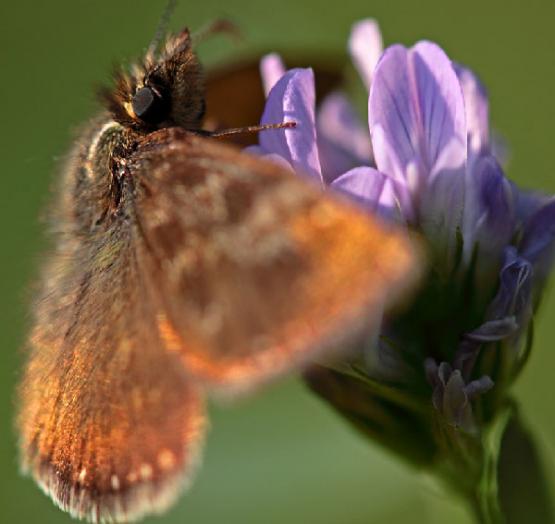
Why biodiversity means better terroir
12 min read
by Hans-Peter Schmidt (Delinat Institute & Mythopia)
“Biodiversity: the Foundation of Quality”
There are unmistakable signs that grape aroma, even in renowned terroirs, is deteriorating, while at the same time the susceptibility of vines to disease is continually calling for new pesticides. Against this background, European wine-growers are beginning to rethink their strategies, questioning established conventions, re-discovering the ecological context of their work and adopting a “back to the roots” strategy based on the natural principles governing terroir quality.
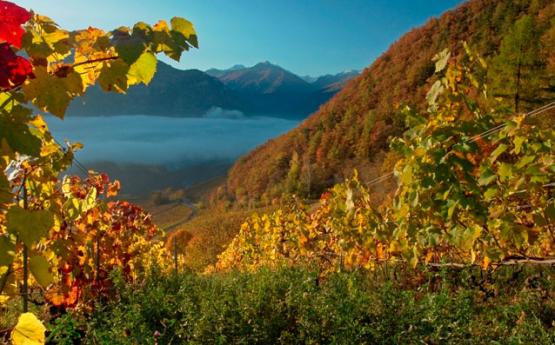
The core principle underlying the new methods used in quality-driven wine-growing involves specifically promoting biodiversity. Though the visible signs of this shift – a carpet of fragrant flowers covering the vineyard – are not insignificant, the main aspect of the new methods is an understanding of a vineyard as an ecosystem whose ecological balance is dependent on a complex network of biological diversity. The presence of large numbers of butterflies, beetles, bees and birds are the visible signs of the whole system being in balance. The core factor lies however in the soil. The biological activation of soil life is the key to a stable wine-growing ecosystem. Soil biodiversity is the decisive factor behind terroir quality and a vine’s resistance to disease.
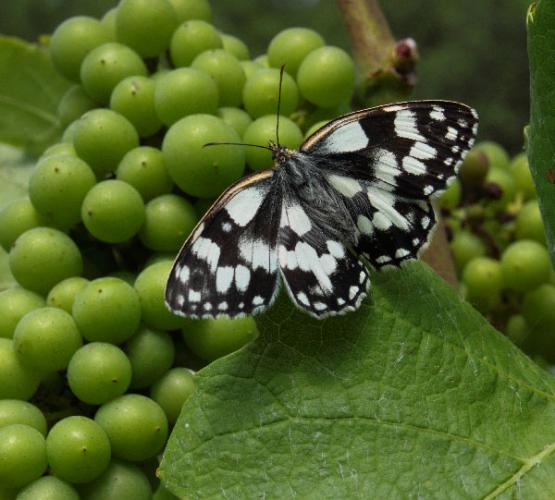
The importance of soil life
Vines are not machines converting NPK fertilisers into grape juice, and in doing so extracting a few trace elements from dead rock. They are instead living organisms dependent for their well-being and prosperity on their symbiosis with numerous other organisms. The energy created by a vine through photosynthesis is not just used to produce leaves, grapes, new shoots and roots. Some 30% of it is also used for producing root exudates, the function of which is to supply a fully-grown vine in healthy soil with up to 5 trillion micro-organisms (more than 50,000 different species, for the most part bacteria, fungi, protozoa and nematodes), from which it receives in exchange for carbohydrates important mineral nutrients, water and protection against parasites.
When this complex and extremely diverse network of micro-organisms in the rhizosphere of the plants is destroyed or permanently weakened by herbicides, pesticides, fertilisers and tilling, the vine’s entire biological system loses its balance. This in turn results in increased susceptibility to parasites and other pathogens (e.g. nematodes and mildew), reduced resistance to negative environmental influences (in particular water stress and nutrient shortages), lower life expectancy (a vine’s average life expectancy is 100 years), as well as the loss of the wine’s bouquet.
Characteristic terroir wines can only develop when the vine’s roots are able to uphold their symbiotic interaction with the wide range of species found in the soil and enabling the vine to organise its own nutrient system on the basis of a wide range of different nutrients.
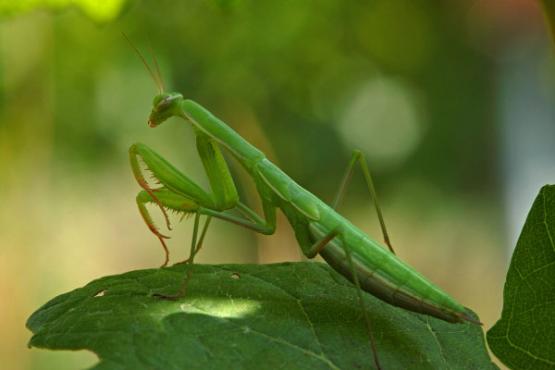
Promoting soil biodiversity
A vine reigns over the microflora in its rhizosphere like a king over his kingdom. For this ‘kingdom’ to be established however, the requirements for a stable nutrient cycle need to be fulfilled throughout the soil system. Earthworms, arthropods, bacteria and fungi need a steady diet of organic matter (leaves, straw, twigs, branches, roots, bones, faeces, meat, exudates) which they decompose before storing and distributing them in the soil. Where this diet is not available – with spraying having killed off most of it, with soil ploughed up and compacted by tractors and/or when nutrients have been eroded and leached out of the soil -, soil life becomes doomed to a slow death.
To promote soil activity, a plethora of different plant species is required. Their different contents and life cycles are needed to supply the soil with nutrients throughout the year, thus stimulating soil activity. This is the reason why a large number of ‘companion’ plants are needed alongside the vine, not just providing green cover and protection for the soil, but also fulfilling the following functions:
- Building up humus;
- Distributing nutrients, aerating the soil and protecting it against erosion through roots spread out in all directions;
- Storing mineral nutrients through symbiosis with bacteria and mycorrhiza; producing natural fertilisers (in particular nitrogen and phosphorus) available to plants;
- Producing secondary phytochemicals important for balanced soil health;
- Increasing the soil’s capability to store water;
- Degrading and adsorbing toxic substances in the soil;
- Promoting insect diversity through flowers and leaves.
In accordance with these criteria, the Delinat Institute has developed a range of seed mixtures tailored to different types of soil and climate conditions. Over the last 5 years, these have been tested in different vineyards, looking at the effect they have on vines, wines and the ecosystem in general. The seed mixtures contain some 40 – 50 different plant species, whereby the majority are legumes with varying root lengths and growth rates (alfalfa, red clover, common sainfoin, birdsfoot trefoil, hop clover, vetch and vetchling).
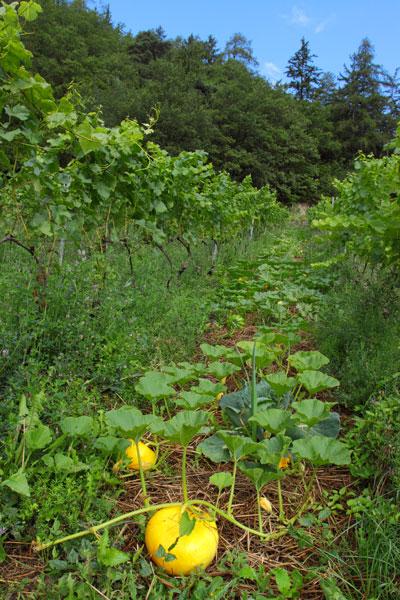
For more detailed information about the seed mixtures and cover crop management see the web page of Delinat-Institute in five European languages.
Cover crops and their influence on wine quality
A meta-study on the effects of cover crops in vineyards has shown that these are practically nearly all positive with regard to reducing pathogens on vines. Vine health can thus be boosted and with reduced use of pesticides, grape quality can be influenced positively.
Through reduced pathogen pressure, vines become able to steadily improve their immune systems. This in turn allows further reductions in the amounts of pesticides needing to be sprayed, in the best case creating a self-reinforcing virtuous circle. An improved immune system leads to the increased production of secondary phytochemicals, again having a positive effect on grape and wine quality.
Where the vineyard soil is rich, selected cover crop strategies can help establish healthy competition, thereby regulating yields and improving grape quality. Induced moderate shortages force the vines to develop partnerships with soil micro-organisms (e.g. mycorrhiza fungi or rhizo-bacteria). These in turn can improve the availability of energy-rich nutrients. The result is an autonomous and, insofar as the right balance has been achieved between moderate stress and improved soil fertility, balanced diet for the vines, again having a positive effect on grape quality.
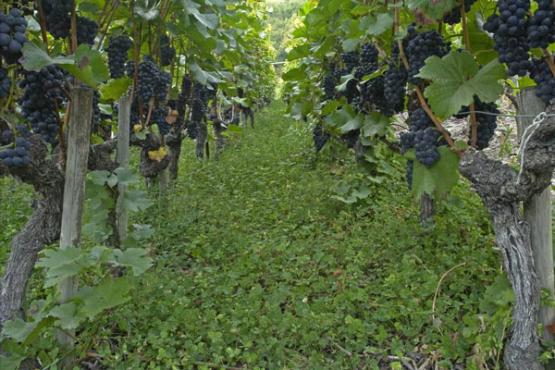
Stabilising the ecosystem through plant and insect diversity
Although promotion of biodiversity begins with soil reactivation (90% of all animal species live in the soil, and in one gram of healthy soil up to one billion micro-organisms and up to 60,000 different species can live), soil life is however not completely detached from the biodiversity visible above ground.
Plants constitute the link between habitats underground and above ground. In order for them to be able to effectively exercise this linkage function in the long term, they enter into a wide range of partnerships with their natural surroundings not just in the dark realms of their roots but also above ground. Just as they need the help of the wind or insects for pollination, they also need partnerships with beneficial organisms to fight their natural enemies.
The greater the plant diversity is, the greater the variety of insects, birds, reptiles, etc. living in self-regulating competition. Where plant diversity is destroyed by monocultures, a negative selection of bacteria, fungi, insects, etc. will occur, with only those species able to feed on the remaining plants in a position to retain their natural habitat. As their natural enemies are unable to develop on account of the one-sided focus of the crop, the few remaining species adapted to the monoculture are able to multiply unhindered, developing into pests and becoming a plague. Pesticide and insecticide spraying provides only short-term relief, as this encourages the negative selection, meaning that new pesticides and insecticides in increasingly high dosages need to be applied.

Further measures for promoting vineyard biodiversity
A high level of vineyard biodiversity is not just a way of controlling pests through the promotion of their natural enemies, but also helps strengthen a vine’s own immune system. In addition to stipulating a cover crop with abundant diversity between the vines, the Charter for Vineyards with High Biodiversity sets forth the following supplementary measures:
- Planting shrubs at the ends of each row, in places where they do not interfere with work. Criteria for the selection of shrubs include their attraction for butterflies and other insects, the provision of nesting opportunities, root symbiosis, and the use of any fruit. Native species are to be preferred.
- Interspersing hedges with the vines. Dependent on local circumstances, there should be at least 2 20-metre hedges per hectare. Hedges constitute biological hotspots, acting as corridors linking up ecological areas. Moreover they constitute a natural barrier preventing the spread of harmful fungi.
- Planting fruit trees as a way of improving vertical diversity. The presence of trees in the middle of a low-growing and little-structured field/vineyard is a great way of attracting birds, insects and other groups of animals. They are also a way of promoting the long-term colonisation of an ecosystem. At least one tree per hectare should be planted amidst the vines, and no point of the vineyard should be further than 50 metres away from a tree.
- The provision of compensatory areas (at least 50 m2 per hectare) as diversity hotspots both within and on the perimeter of a vineyard. These areas become the home of aromatic herbs and wild flowers.
- The provision of structural elements, such as piles of stones or wood. These provide a habitat for reptiles and insects. The provision of nesting aids for bees, insects and birds. These can be integrated into trellis posts. Perches for birds of prey, with the latter helping to keep the rodent population in check.
- Instead of grubbing up old vineyards and completely replanting them, vines that have become too old are replaced individually. The young vines are taken from the vineyard using massale selection and grafted onto existing root structures on-site. In doing so, selection perfectly adapted to the terroir takes place over generations. The thus achieved genetic diversity reduces the likelihood of infections through pests, boosts wine quality and also improves vine resilience to prevailing conditions.
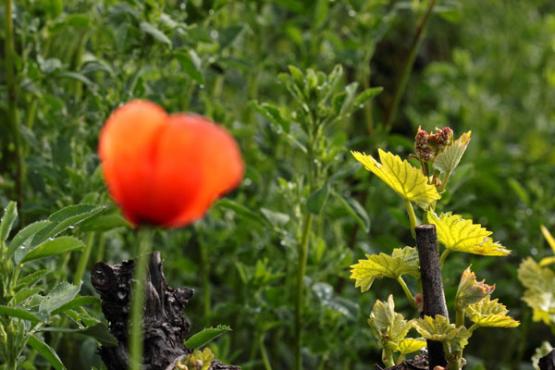
The complete charter for vineyards in high biodiversity can be found below.
The economic benefits of biodiversity
The intelligent use of resources and material cycles in wine-growing and agriculture can make a decisive contribution to protecting the environment, the climate and biodiversity, without negatively influencing productivity. The most visible sign (even for non-experts) of an incipient restoration of harmony in the vineyard is the number of different types of butterflies. Whereas five years previously (before conversion to the above-discussed methods) only two types of butterflies were to be found on the Delinat Institute’s vineyards, 2010 saw some 60 different types being counted. The following arguments are however probably of greater importance to wine-growers:
- The disease resistance of the vines has greatly improved over the last five years, with the consequence that neither chemical pesticides nor sulphur are needed any longer.
- Although fertilisers and herbicides are no longer applied, vine vitality and yields have stabilised at a high level.
- With sulphites and other oenological supplements no longer being used, the ageing potential of the wines has increased significantly.
- The increased labour costs are compensated by the savings in fertilisers and pesticides (costs for pesticides and fertilisers: EUR 150 / ha).
- The motivation of the people working in a bio-diversified vineyard is much higher, as shown by their increased efficiency and their willingness to take over responsibility.
- The aesthetic and ecological quality of the vineyard can be used as an important marketing argument vis-à-vis customers.
And last but not least, wine-growers will find themselves rediscovering pride in their work, creating great terroir wines in partnership with nature.
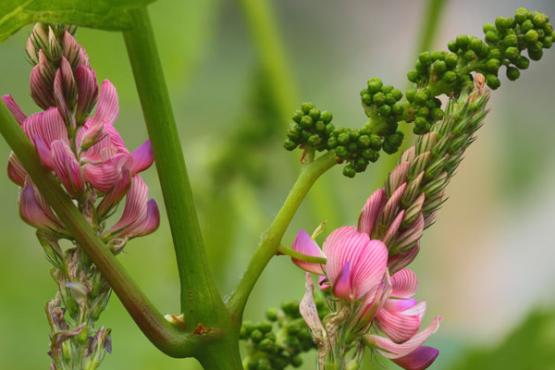
Charter for biodiversity in vineyards
The principal idea behind the new methods for quality-orientated winegrowing is to specifically encourage biodiversity. This however has little to do with that aesthetical image of a vineyard full of fragrant flowers and grasshoppers. Instead it is based on an understanding of a vineyard as an ecosystem, whose flexible balance is created by the complex interaction of many different species of flora and fauna. The presence of various types of butterflies, beetles, bees and birds is the most obvious sign of an intact ecosystem, and the intention of promoting biodiversity is to achieve a stable ecosystem and to increase the quality of the Terroir via the sustainable use of natural forces.
Biodiversity of the soil and soil cover
- Promoting biodiversity in the vineyard starts with the reactivation of the soil. For this purpose only bioactive manure is applied: compost, compost extracts, herb extracts, cover crops, biochar, mulch, MRF. The use of artificial fertilizers, fertilizer concentrates, and non-fermented slurry is not allowed. The application of non-composted animal manure should similarly be avoided.
- Planting a permanent cover crop containing leguminous plants between the vines, thereby guaranteeing the supply of nutrients to the vines without any need for additional artificial fertilizers. The cover crop with its wide variety of leguminous plants promotes a very high level of biological activity in the soil and improves the storage of water and nutrients as well as preventing erosion.
- A perennial cover crop. The goal is to achieve a cover crop rich in species with native flowers. At least 20% of the seed mixture for the cover crop should be composed of insect-attracting plants. The goal is to be able to find at least 50 types of wild plants in the vineyard.
Vertical biodiversity
- Planting bushes at the end of the rows where they do not interfere with vineyard work. The criteria for choosing the bushes are based on their potential attractiveness for butterflies and other insects, their nesting possibilities, the symbiosis of their roots and the use of their fruits. Native species are to be planted.
- Planting hedges at regular intervals between the vines. Depending on local conditions, at least 2 x 20m of hedges per hectare are recommended. The hedges act as biodiversity hotspots and as aisles, ideal for interconnecting ecological areas. As natural barriers between the rows they stop harmful fungi from spreading.
- Planting fruit trees to improve vertical diversity. Trees among low-growing plants and in little-structured cultivation areas are a great attraction for birds, insects and other groups of animals and encourage the re-population of natural habitats. The trees reach up into the aerial plankton and act as collectors of spores; allowing yeasts and other fungi to colonize the vineyard (diversity of natural yeasts for wine making and as competition for harmful fungi). At least one tree should be planted between the vines for each hectare of ground as well as several small trees on suitable NE-NW vineyard boundaries. The distance to the nearest tree should not be more than 50m from any point of the vineyard. Possible grape harvest losses can be compensated by the fruit harvested from the trees.
Structural biodiversity
- Ecological compensation areas rich in species (at least 50 m2 for every hectare) should be created as diversity hotspots both within the vineyard and on its edges, where aromatic herbs and wild flowers can grow. The distance to the nearest hotspot should not be more than 50m from any point of the vineyard.
- Creation of structural elements such as stones and piles of wood for reptiles and insects. Installation of artificial nests for wild bees, insects and birds. The artificial nests may be integrated in the staking poles. Perches for birds of prey for a are good for fighting rodents. Any sprayed pesticides must be made up of substances causing no harm to bees or insects (no chemical pesticides and no sulphur)
Crop biodiversity
- Cultivation of at least one secondary crop between the main crop. This can be a vegetable such as tomatoes or pumpkins, a fruit such as raspberries or strawberries, a winter cereal such as rye or barley, or aromatic herbs, planted or sown between the rows of vines. Also suitable are fruit bushes like chokeberry, sea buckthorn or sloe planted in lines between the vines, as are rows of fruit trees (vineyard peach, plum, almond, quince, etc.). Secondary cultures also include bees, sheep, chickens, fish and other small farm animals. The areas earmarked for secondary cultures must be large enough to ensure a proper economic return.
Genetic Diversity
- Instead of grubbing up old vineyards and replanting them from scratch, the old vines should be successively replaced, with the new vines selected by means of massale selection from the same vineyard and being grafted on to existing vines, thereby over time achieving a selection of varieties perfectly adapted to the Terroir. Such genetic diversity reduces the threat of infection by pests, increases hardiness and generally improves the quality of the wine
(1) Niggli C: Legume green cover in vineyards, Ithaka-Journal, 2009, p.269-290, http://www.ithaka-journal.net/leguminosebegrunung-im-weinberg-kurzform?lang=en,
(2) For more information on how a bladed roller works, see www.rolojack.com
(3) Charter for vineyards with high biodiversity – Ithaka-Journal, 2009, p.291-294, www.ithaka-journal.net
(4) Briemle G, Eickhoff G, Wolf R. 1991: Mindestpflege und Mindestnutzung unterschiedlicher Grünlandtypen aus landschaftsökologischer und landeskultureller Sicht (Minimum maintenance and minimum use of different grassland types from a landscape ecological and national cultural perspective) – Beiheft 60 der Veröff. Naturschutz Landschaftspflege, 160 S., Available from: LfU Karlsruhe.
(5) Flügel I: Gesunder Weinberg durch Begrünung: Erfolgsfaktoren für eine hohe Weinqualität in Weinanbau (Healthy vineyards through the use of cover crops: success factors for the production of high-quality wines), VDM Verlag Dr. Müller, Saarbrücken, 2007


